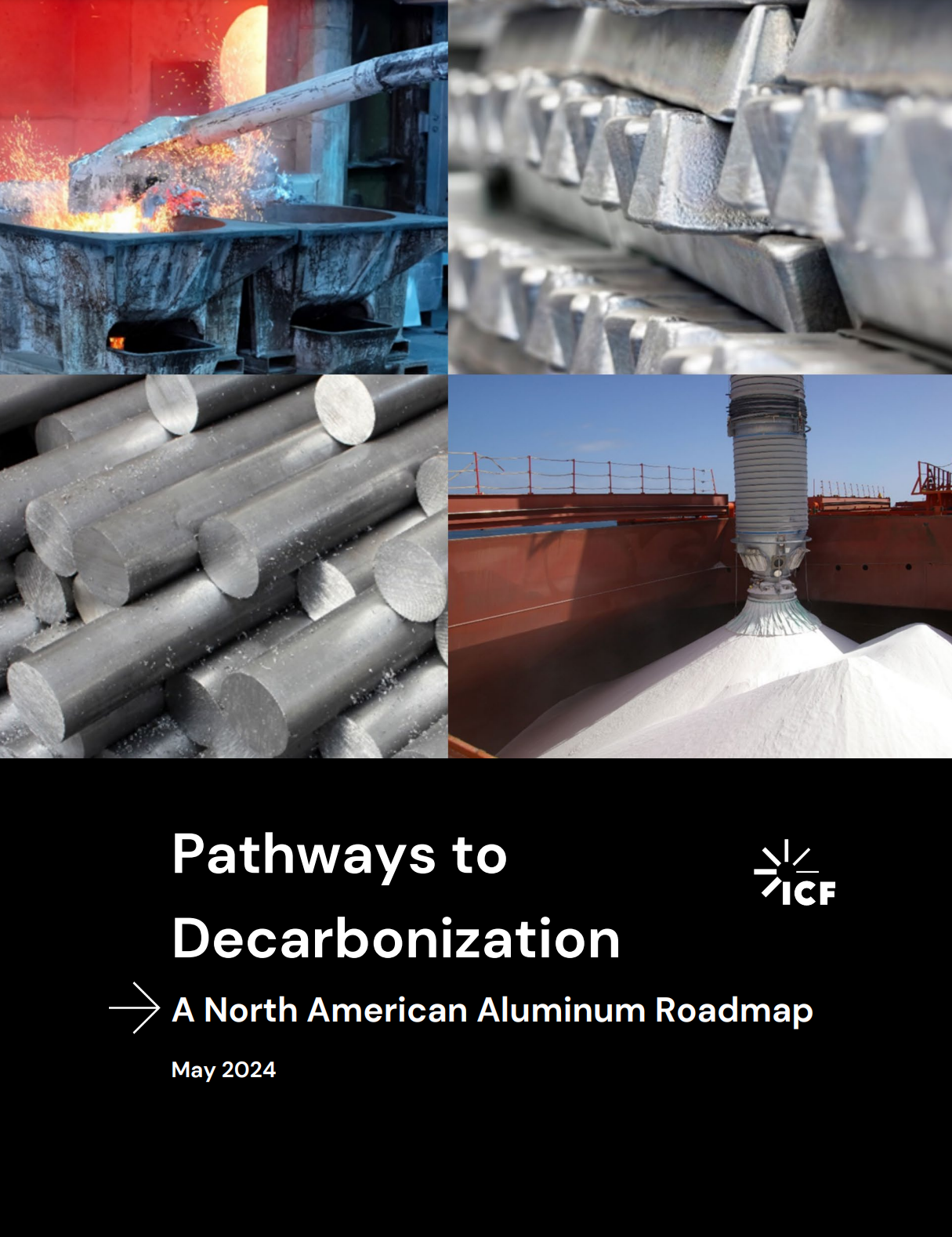Aluminum Association publishes Roadmap to Decarbonization
 The Aluminum Association's new report, "Pathways to Decarbonization: A North American Aluminum Roadmap," outlines strategies to significantly reduce carbon emissions in the North American aluminum industry by mid-century. The report emphasizes the industry's competitive advantage, with North American aluminum having a carbon footprint approximately 50% lower than the global average. This advantage stems from the use of low carbon primary aluminum, extensive recycling, and voluntary emission reductions over the past decades. To meet the aggressive emission reduction targets, the report calls for an all-encompassing approach involving substantial public and private investments.
The Aluminum Association's new report, "Pathways to Decarbonization: A North American Aluminum Roadmap," outlines strategies to significantly reduce carbon emissions in the North American aluminum industry by mid-century. The report emphasizes the industry's competitive advantage, with North American aluminum having a carbon footprint approximately 50% lower than the global average. This advantage stems from the use of low carbon primary aluminum, extensive recycling, and voluntary emission reductions over the past decades. To meet the aggressive emission reduction targets, the report calls for an all-encompassing approach involving substantial public and private investments.
Achieving the net zero by 2050 goals will require a comprehensive strategy, including aluminum production technology improvements, adoption of alternative fuels, carbon capture, and grid decarbonization. Recycling more aluminum efficiently is also highlighted as a crucial factor, with the potential to significantly cut emissions. The report underscores that one-third of the required emissions reductions can come from technological improvements within the industry, while the remaining reductions will rely on newly developed technologies, significant investments, and supportive national policies.
Analysis of Impact on Non-Ferrous Foundries
 The push for decarbonization will likely increase operational costs in the short term as foundries invest in new technologies and processes to meet emission reduction targets. However, the long-term benefits include a more sustainable production model and enhanced competitiveness globally, especially given the lower carbon intensity of North American aluminum.
The push for decarbonization will likely increase operational costs in the short term as foundries invest in new technologies and processes to meet emission reduction targets. However, the long-term benefits include a more sustainable production model and enhanced competitiveness globally, especially given the lower carbon intensity of North American aluminum.
Non-ferrous foundries will need to adapt to the new regulatory environment, which may involve significant changes in production practices and increased emphasis on recycling and efficiency improvements. The anticipated $60 billion in investments required for North America to meet global net-zero targets will necessitate collaboration between industry stakeholders and policymakers to ensure the availability of resources and incentives. Ultimately, while the transition may pose initial financial and logistical challenges, the move towards a greener industry will bolster the sector's resilience and sustainability, securing its position in the global market.
